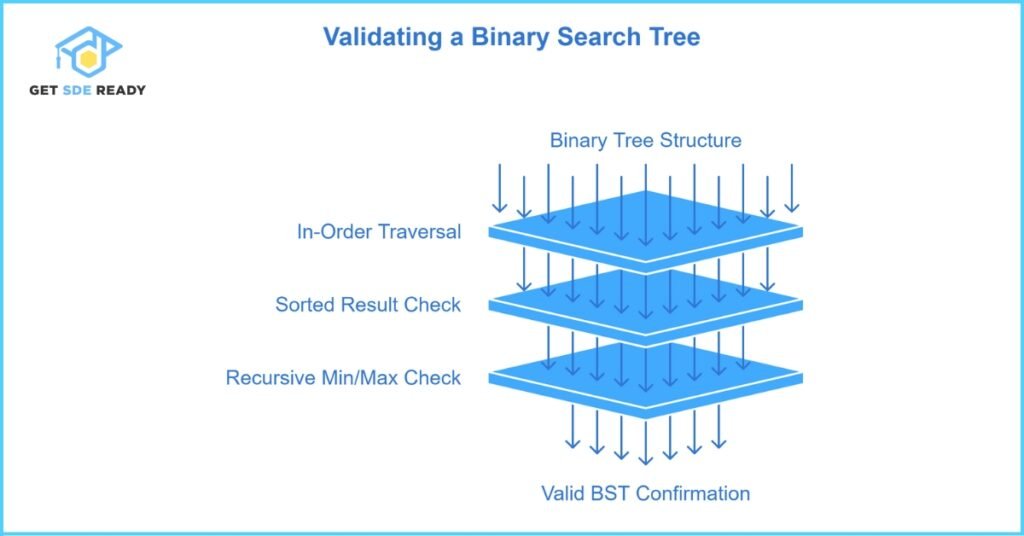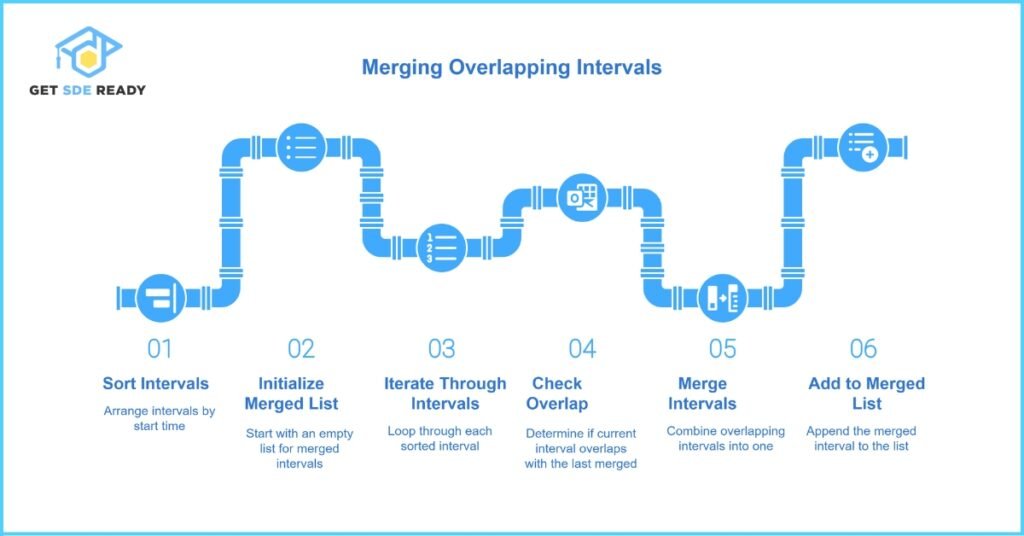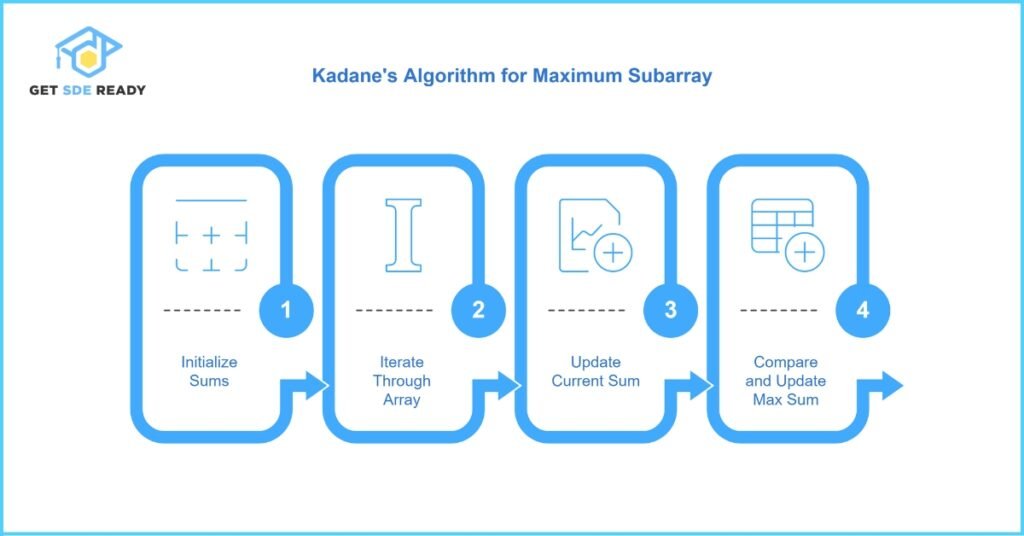Data Structures and Algorithms
- Introduction to Data Structures and Algorithms
- Time and Space Complexity Analysis
- Big-O, Big-Theta, and Big-Omega Notations
- Recursion and Backtracking
- Divide and Conquer Algorithm
- Dynamic Programming: Memoization vs. Tabulation
- Greedy Algorithms and Their Use Cases
- Understanding Arrays: Types and Operations
- Linear Search vs. Binary Search
- Sorting Algorithms: Bubble, Insertion, Selection, and Merge Sort
- QuickSort: Explanation and Implementation
- Heap Sort and Its Applications
- Counting Sort, Radix Sort, and Bucket Sort
- Hashing Techniques: Hash Tables and Collisions
- Open Addressing vs. Separate Chaining in Hashing
- DSA Questions for Beginners
- Advanced DSA Questions for Competitive Programming
- Top 10 DSA Questions to Crack Your Next Coding Test
- Top 50 DSA Questions Every Programmer Should Practice
- Top Atlassian DSA Interview Questions
- Top Amazon DSA Interview Questions
- Top Microsoft DSA Interview Questions
- Top Meta (Facebook) DSA Interview Questions
- Netflix DSA Interview Questions and Preparation Guide
- Top 20 DSA Interview Questions You Need to Know
- Top Uber DSA Interview Questions and Solutions
- Google DSA Interview Questions and How to Prepare
- Airbnb DSA Interview Questions and How to Solve Them
- Mobile App DSA Interview Questions and Solutions
DSA Interview Questions
- DSA Questions for Beginners
- Advanced DSA Questions for Competitive Programming
- Top 10 DSA Questions to Crack Your Next Coding Test
- Top 50 DSA Questions Every Programmer Should Practice
- Top Atlassian DSA Interview Questions
- Top Amazon DSA Interview Questions
- Top Microsoft DSA Interview Questions
- Top Meta (Facebook) DSA Interview Questions
- Netflix DSA Interview Questions and Preparation Guide
- Top 20 DSA Interview Questions You Need to Know
- Top Uber DSA Interview Questions and Solutions
- Google DSA Interview Questions and How to Prepare
- Airbnb DSA Interview Questions and How to Solve Them
- Mobile App DSA Interview Questions and Solutions
Introduction to High-Level System Design
System Design Fundamentals
- Functional vs. Non-Functional Requirements
- Scalability, Availability, and Reliability
- Latency and Throughput Considerations
- Load Balancing Strategies
Architectural Patterns
- Monolithic vs. Microservices Architecture
- Layered Architecture
- Event-Driven Architecture
- Serverless Architecture
- Model-View-Controller (MVC) Pattern
- CQRS (Command Query Responsibility Segregation)
Scaling Strategies
- Vertical Scaling vs. Horizontal Scaling
- Sharding and Partitioning
- Data Replication and Consistency Models
- Load Balancing Strategies
- CDN and Edge Computing
Database Design in HLD
- SQL vs. NoSQL Databases
- CAP Theorem and its Impact on System Design
- Database Indexing and Query Optimization
- Database Sharding and Partitioning
- Replication Strategies
API Design and Communication
Caching Strategies
- Types of Caching
- Cache Invalidation Strategies
- Redis vs. Memcached
- Cache-Aside, Write-Through, and Write-Behind Strategies
Message Queues and Event-Driven Systems
- Kafka vs. RabbitMQ vs. SQS
- Pub-Sub vs. Point-to-Point Messaging
- Handling Asynchronous Workloads
- Eventual Consistency in Distributed Systems
Security in System Design
Observability and Monitoring
- Logging Strategies (ELK Stack, Prometheus, Grafana)
- API Security Best Practices
- Secure Data Storage and Access Control
- DDoS Protection and Rate Limiting
Real-World System Design Case Studies
- Distributed locking (Locking and its Types)
- Memory leaks and Out of memory issues
- HLD of YouTube
- HLD of WhatsApp
System Design Interview Questions
- Adobe System Design Interview Questions
- Top Atlassian System Design Interview Questions
- Top Amazon System Design Interview Questions
- Top Microsoft System Design Interview Questions
- Top Meta (Facebook) System Design Interview Questions
- Top Netflix System Design Interview Questions
- Top Uber System Design Interview Questions
- Top Google System Design Interview Questions
- Top Apple System Design Interview Questions
- Top Airbnb System Design Interview Questions
- Top 10 System Design Interview Questions
- Mobile App System Design Interview Questions
- Top 20 Stripe System Design Interview Questions
- Top Shopify System Design Interview Questions
- Top 20 System Design Interview Questions
- Top Advanced System Design Questions
- Most-Frequented System Design Questions in Big Tech Interviews
- What Interviewers Look for in System Design Questions
- Critical System Design Questions to Crack Any Tech Interview
- Top 20 API Design Questions for System Design Interviews
- Top 10 Steps to Create a System Design Portfolio for Developers
Top Atlassian DSA Interview Questions & Solutions | 2025 Guide
Preparing for Atlassian’s Data Structures and Algorithms (DSA) interviews can feel overwhelming, but with the right strategy, you can crack them confidently. Whether you’re a recent graduate or an experienced developer, mastering DSA is key to landing a role at this tech giant. Sign up for free DSA resources to get started!
Understanding Atlassian’s DSA Interview Process
Atlassian’s interview process emphasizes problem-solving, algorithmic efficiency, and clean code. Engineers here solve complex scalability challenges daily, so your ability to optimize solutions matters.
Key Focus Areas in DSA Interviews
- Problem-Solving Skills: Interviewers assess how you break down problems and approach edge cases.
- Code Quality: Clean, modular code is a must.
- Optimization: Time and space complexity analysis is critical.
- Communication: Explain your thought process clearly.
A 2023 survey by Interview Kickstart found that 75% of Atlassian candidates face 2–3 DSA rounds, each lasting 45–60 minutes.
Evaluation Criteria Comparison
Criteria | Weightage | Example |
Correctness | 30% | Does the code handle all test cases? |
Efficiency | 40% | O(n) vs. O(n²) solutions |
Readability | 20% | Meaningful variable names |
Communication | 10% | Clarifying doubts upfront |
Top Atlassian DSA Interview Questions and Solutions
Question 1: Reverse a Linked List in Groups of K
Problem Statement
Given a linked list, reverse every k nodes. If nodes remain, reverse them too.
Approach and Solution
- Iterative Reversal: Use pointers to track groups.
- Recursive Handling: Reverse remaining nodes if k > remaining length.
def reverseKGroup(head, k):
dummy = ListNode(0)
dummy.next = head
prev = dummy
while prev.next:
start = prev.next
end = prev
for _ in range(k):
end = end.next
if not end:
return dummy.next
next_group = end.next
end.next = None
prev.next = reverse(start)
start.next = next_group
prev = start
return dummy.next
Optimization Tips:
- Avoid recursion for large k to prevent stack overflow.
- Time Complexity: O(n), Space Complexity: O(1).
Question 2: Find the Longest Palindromic Substring
Problem Statement
Given a string, return its longest palindromic substring.
Approach and Solution
- Expand Around Center: Check odd/even-length palindromes.
- Dynamic Programming: Store palindrome status in a 2D table.
Java Code:
public String longestPalindrome(String s) {
int maxLength = 0, start = 0;
for (int i = 0; i < s.length(); i++) {
int len1 = expand(s, i, i); // odd
int len2 = expand(s, i, i + 1); // even
int len = Math.max(len1, len2);
if (len > maxLength) {
maxLength = len;
start = i - (len - 1) / 2;
}
}
return s.substring(start, start + maxLength);
}
Optimization Tips:
- Time Complexity: O(n²), Space Complexity: O(1).
Question 3: Check if a Binary Tree is a Valid BST
Problem Statement
Given the root of a binary tree, determine if it’s a valid Binary Search Tree (BST).
Approach and Solution
- In-Order Traversal: Verify that the traversal result is sorted.
- Recursive Min/Max Check: Track valid ranges for each node.
Java Code
public boolean isValidBST(TreeNode root) {
return validate(root, Long.MIN_VALUE, Long.MAX_VALUE);
}
private boolean validate(TreeNode node, long min, long max) {
if (node == null) return true;
if (node.val <= min || node.val >= max) return false;
return validate(node.left, min, node.val) && validate(node.right, node.val, max);
}

Optimization Tips
- Avoid integer overflow by using Long types.
- Time Complexity: O(n), Space Complexity: O(h) (height of tree).
Question 4: Design a Circular Queue
Problem Statement
Implement a circular queue with enQueue, deQueue, Front, Rear, and isEmpty operations.
Approach and Solution
- Array-Based: Use a fixed-size array with front and rear pointers.
- Linked List: Dynamically manage nodes (better for variable size).
class CircularQueue:
def __init__(self, k):
self.queue = [None] * k
self.size = k
self.front = self.rear = -1
def enQueue(self, value):
if self.isFull(): return False
if self.isEmpty(): self.front = 0
self.rear = (self.rear + 1) % self.size
self.queue[self.rear] = value
return True
Optimization Tips
- Handle edge cases like full/empty queues.
- Time Complexity: O(1) for all operations.
Question 5: Minimum Window Substring
Problem Statement
Given two strings s and t, find the smallest substring in s that contains all characters of t.
Approach and Solution
- Sliding Window: Use two pointers and a hash map to track character counts.
- Expand/Shrink: Expand the right pointer until all characters are included, then shrink the left.
Java Code
public String minWindow(String s, String t) {
int[] map = new int[128];
for (char c : t.toCharArray()) map[c]++;
int left = 0, right = 0, minLen = Integer.MAX_VALUE, count = t.length(), start = 0;
while (right < s.length()) {
if (map[s.charAt(right++)]-- > 0) count--;
while (count == 0) {
if (right - left < minLen) {
minLen = right - left;
start = left;
}
if (map[s.charAt(left++)]++ == 0) count++;
}
}
return minLen == Integer.MAX_VALUE ? "" : s.substring(start, start + minLen);
}
Optimization Tips
- Use array instead of HashMap for faster lookups.
- Time Complexity: O(n), Space Complexity: O(k) (k = unique characters in t).
Question 6: Merge Intervals
Problem Statement
Given an array of intervals, merge all overlapping intervals.
Approach and Solution
- Sort and Merge: Sort intervals by start time, then merge adjacent overlaps.
Python Code
def merge(intervals):
intervals.sort(key=lambda x: x[0])
merged = []
for interval in intervals:
if not merged or merged[-1][1] < interval[0]:
merged.append(interval)
else:
merged[-1][1] = max(merged[-1][1], interval[1])
return merged
Optimization Tips
- Sorting dominates time complexity.
- Time Complexity: O(n log n), Space Complexity: O(n).
Question 7: Detect Cycle in a Directed Graph
Problem Statement
Given a directed graph, check if it contains a cycle.
Approach and Solution
- DFS with Recursion Stack: Track visited nodes and recursion stack to detect back edges.
- Topological Sorting: Kahn’s algorithm (BFS-based) for cycle detection.
Python Code

def hasCycle(graph):
visited = [False] * len(graph)
recursion_stack = [False] * len(graph)
for node in range(len(graph)):
if not visited[node]:
if dfs(node, graph, visited, recursion_stack):
return True
return False
def dfs(node, graph, visited, recursion_stack):
visited[node] = True
recursion_stack[node] = True
for neighbor in graph[node]:
if not visited[neighbor]:
if dfs(neighbor, graph, visited, recursion_stack):
return True
elif recursion_stack[neighbor]:
return True
recursion_stack[node] = False
return False
Optimization Tips
- Time Complexity: O(V + E), Space Complexity: O(V).
Question 8: Implement LRU Cache
Problem Statement
Design an LRU (Least Recently Used) cache that supports get and put operations.
Approach and Solution
- Hash Map + Doubly Linked List: Use a hash map for O(1) access and a list to track usage order.
Java Code
class LRUCache {
class Node {
int key, val;
Node prev, next;
}
private Map<Integer, Node> cache = new HashMap<>();
private int capacity;
private Node head, tail;
public LRUCache(int capacity) {
this.capacity = capacity;
head.next = tail;
tail.prev = head;
}
public int get(int key) {
if (!cache.containsKey(key)) return -1;
Node node = cache.get(key);
moveToHead(node);
return node.val;
}
}
Optimization Tips
- Use LinkedHashMap in Java for simpler implementation.
- Time Complexity: O(1) for both get and put.
Question 9: Maximum Subarray (Kadane’s Algorithm)
Problem Statement
Find the contiguous subarray with the largest sum.
Approach and Solution
- Kadane’s Algorithm: Track current and maximum sums iteratively.
Python Code
def maxSubArray(nums):
max_sum = current_sum = nums[0]
for num in nums[1:]:
current_sum = max(num, current_sum + num)
max_sum = max(max_sum, current_sum)
return max_sum

Optimization Tips
- Handle all-negative arrays.
- Time Complexity: O(n), Space Complexity: O(1).
Question 10: Validate Sudoku Board
Problem Statement
Determine if a 9×9 Sudoku board is valid (no duplicates in rows, columns, or 3×3 subgrids).
Approach and Solution
- Hash Sets for Rows, Columns, Subgrids: Use sets to track seen numbers.
Java Code
public boolean isValidSudoku(char[][] board) {
Set<String> seen = new HashSet<>();
for (int i = 0; i < 9; i++) {
for (int j = 0; j < 9; j++) {
char num = board[i][j];
if (num != '.') {
String rowKey = num + " in row " + i;
String colKey = num + " in col " + j;
String boxKey = num + " in box " + i/3 + "-" + j/3;
if (!seen.add(rowKey) || !seen.add(colKey) || !seen.add(boxKey)) return false;
}
}
}
return true;
}
Optimization Tips
- Single-pass solution using strings for keys.
- Time Complexity: O(n²), Space Complexity: O(n²)
Additional Preparation Tips for Atlassian DSA Interviews
Coding Practice Platforms
- LeetCode: 300+ company-tagged questions.
- HackerRank: Atlassian-specific challenges.
- CodeSignal: Mock interviews with real-time feedback.
Platform Comparison
Platform | Atlassian Questions | Difficulty Range |
LeetCode | 150+ | Easy–Hard |
HackerRank | 50+ | Medium–Hard |
CodeSignal | 30+ | Medium |
Mock Interviews and Time Management
- Practice with tools like Pramp or Interviewing.io.
- Allocate 15 minutes for problem-solving and 10 minutes for coding.
FAQs About Atlassian DSA Interviews
What Resources Are Best for Atlassian DSA Prep?
Focus on platforms like LeetCode and HackerRank, and review Atlassian’s engineering blog for insights. For structured learning, enroll in GetSDEReady’s DSA Course to master core concepts.
How Important Is Optimization in Atlassian Interviews?
Extremely! Atlassian prioritizes scalable solutions. Always discuss brute-force approaches first, then optimize. Learn optimization techniques via GetSDEReady’s System Design Course.
Should I Practice Recursion for Atlassian?
Yes! Questions on trees, graphs, and backtracking often require recursion. Strengthen your skills with GetSDEReady’s Web Development Course.

DSA, High & Low Level System Designs
- 85+ Live Classes & Recordings
- 24*7 Live Doubt Support
- 400+ DSA Practice Questions
- Comprehensive Notes
- HackerRank Tests & Quizzes
- Topic-wise Quizzes
- Case Studies
- Access to Global Peer Community
Buy for 60% OFF
₹25,000.00 ₹9,999.00
Accelerate your Path to a Product based Career
Boost your career or get hired at top product-based companies by joining our expertly crafted courses. Gain practical skills and real-world knowledge to help you succeed.

ML & AI Kickstart
- Live Classes & Recordings
- 24/7 Live Doubt Support
- Practice Questions
- Case Studies
- Topic wise Quizzes
- Access to Global Peer Community
- Cartificate of Completion
- Referrals
Buy for 65% OFF
₹1,700.00 ₹999.00

LLD Bootcamp
- 7+ Live Classes & Recordings
- Practice Questions
- 24/7 Live Doubt Support
- Case Studies
- Topic wise Quizzes
- Access to Global Peer Community
- Cartificate of Completion
- Referrals
Buy for 65% OFF
₹1,700.00 ₹999.00

Design Patterns Bootcamp
- Live Classes & Recordings
- 24/7 Live Doubt Support
- Practice Questions
- Case Studies
- Access to Global Peer Community
- Topic wise Quizzes
- Referrals
- Cartificate of Completion
Buy for 65% OFF
₹1,700.00 ₹999.00

Essentials of Machine Learning and Artificial Intelligence
- 65+ Live Classes & Recordings
- 24*7 Live Doubt Support
- 22+ Hands-on Live Projects & Deployments
- Comprehensive Notes
- Topic-wise Quizzes
- Case Studies
- Access to Global Peer Community
- Interview Prep Material
Buy for 65% OFF
₹20,000.00 ₹6,999.00

Fast-Track to Full Spectrum Software Engineering
- 120+ Live Classes & Recordings
- 24*7 Live Doubt Support
- 400+ DSA Practice Questions
- Comprehensive Notes
- HackerRank Tests & Quizzes
- 12+ live Projects & Deployments
- Case Studies
- Access to Global Peer Community
Buy for 57% OFF
₹35,000.00 ₹14,999.00

DSA, High & Low Level System Designs
- 85+ Live Classes & Recordings
- 24*7 Live Doubt Support
- 400+ DSA Practice Questions
- Comprehensive Notes
- HackerRank Tests & Quizzes
- Topic-wise Quizzes
- Case Studies
- Access to Global Peer Community
Buy for 60% OFF
₹25,000.00 ₹9,999.00
Reach Out Now
If you have any queries, please fill out this form. We will surely reach out to you.
Contact Email
Reach us at the following email address.
Phone Number
You can reach us by phone as well.
+91-97737 28034
Our Location
Rohini, Sector-3, Delhi-110085